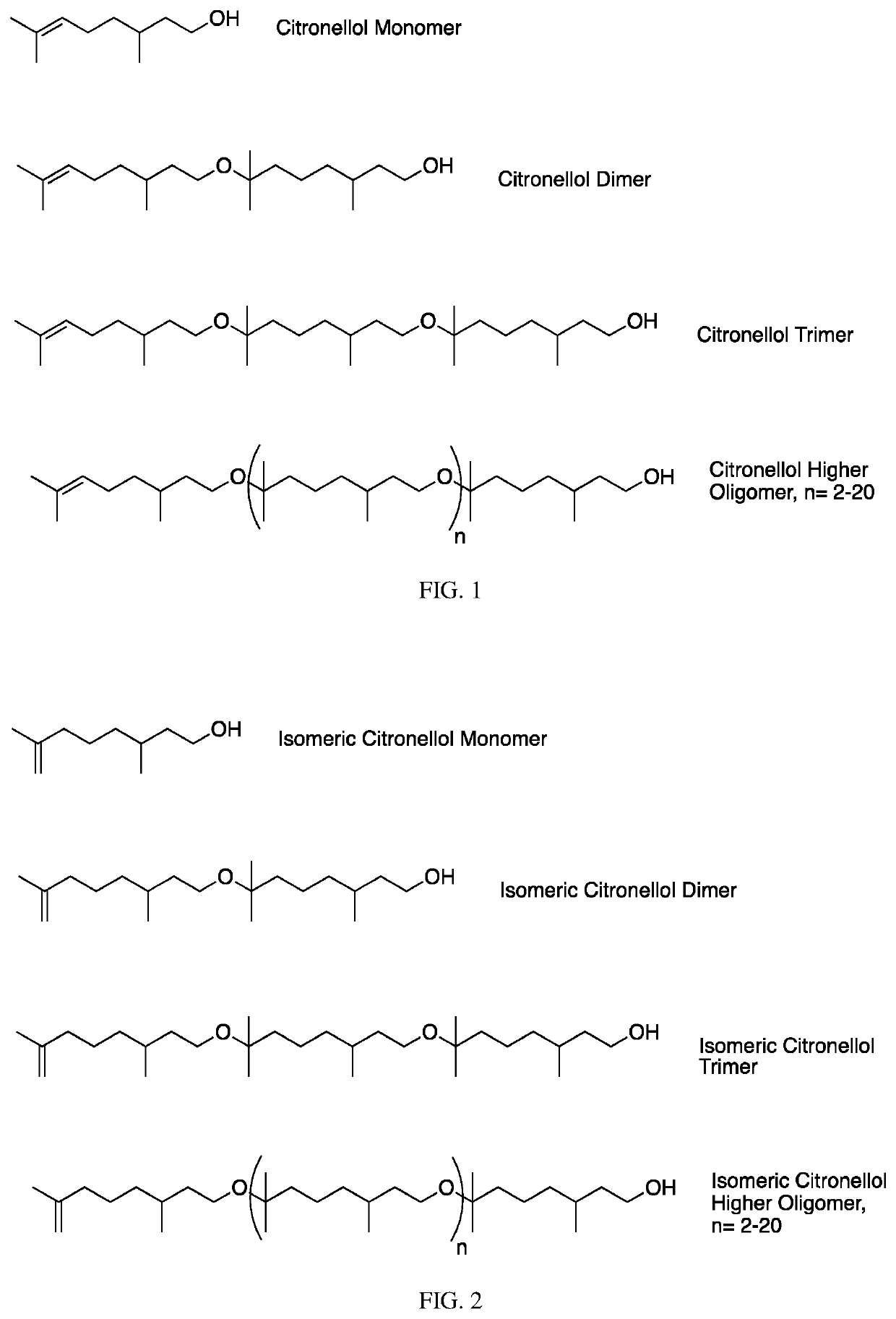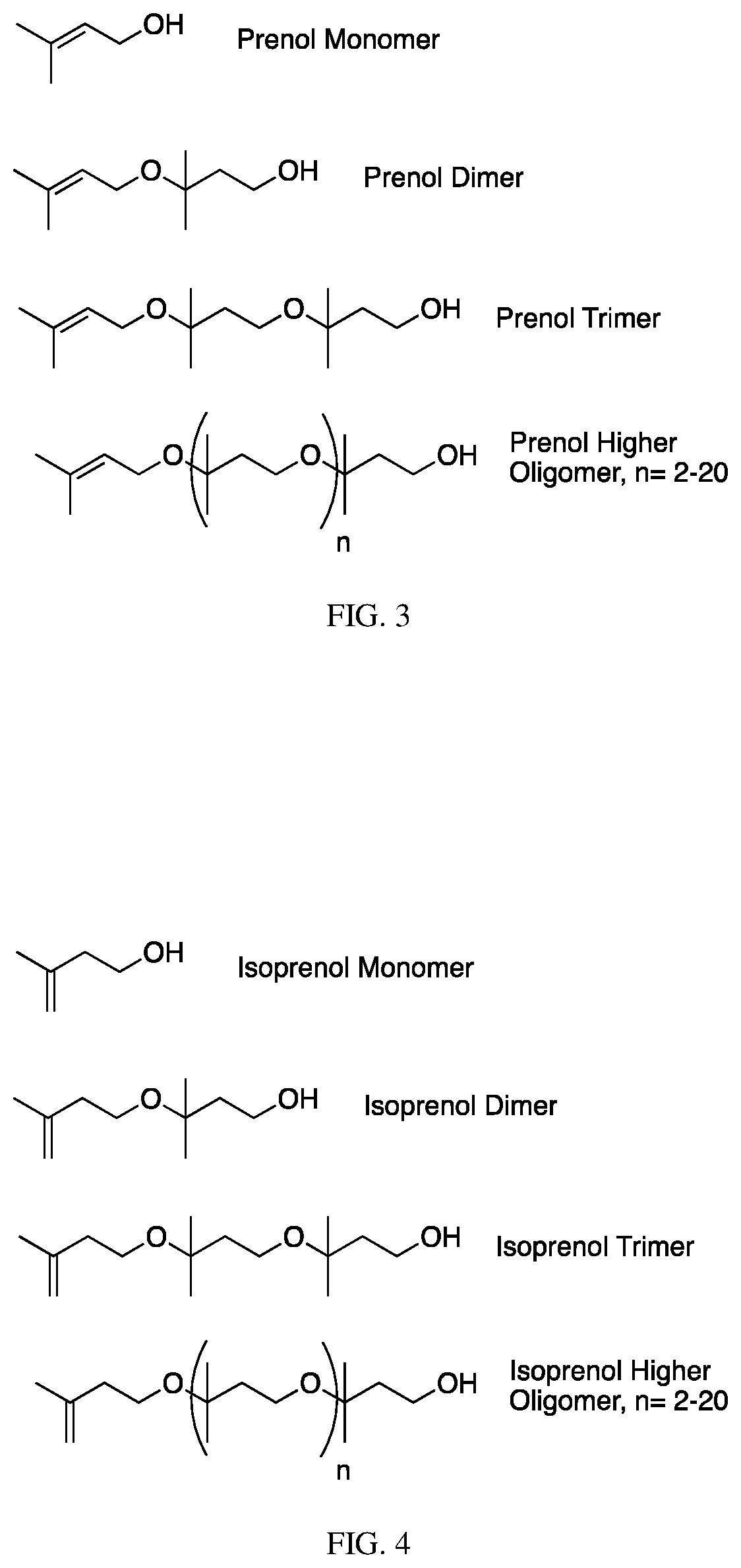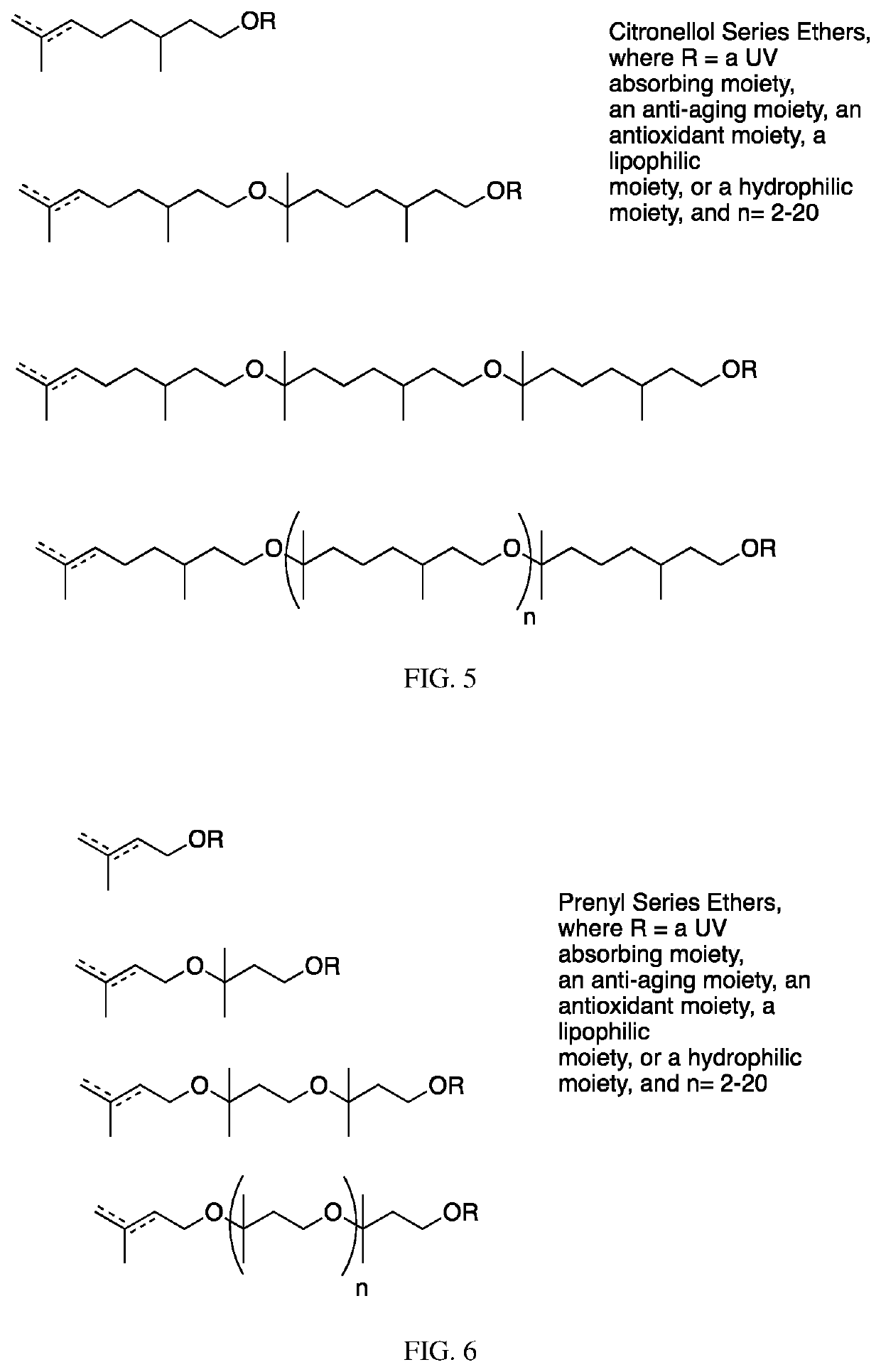Polyether derivatives, uses, and methods of making the same
a technology of polyether derivatives and derivatives, applied in the field of polyether derivatives, can solve the problems of difficult to produce desired ethers on a large scale, under-utilized combination of functionalities of molecules,
- Summary
- Abstract
- Description
- Claims
- Application Information
AI Technical Summary
Benefits of technology
Problems solved by technology
Method used
Image
Examples
example 1
of Citronellol Polymers
[0315]Citronellol (250 g) is combined neat with 5 g of Amberlyst cationic resin and is stirred for 5 days at room temperature. It is observed that >80% polymerization has taken place by 1H NMR. (Note, the reaction time can be dramatically reduced by increasing the concentration of catalyst and temperature). The reaction mixture is then diluted with hexane and is filtered to remove catalyst. The organic phase is then washed with aqueous sodium bicarbonate to remove any residual acid, and then with DI water once. The hexane is then removed on a rotary evaporator under reduced pressure. 269 g of material resulted which then underwent further distillation.
[0316]A fraction (37.5 g) containing fairly clean citronellol is obtained from distillation at 0.5-1.5 mbar and 60-65° C. head temperature. A second fraction containing 46.9 g of >95% pure citronellol dimer is obtained from distillation at 0.2-0.45 mbar and a head temperature of 115-132° C. The remainder of the m...
example 2
s Citronellol Polymerization Over Cation Exchange Resin
[0317]A 6-foot-long, 0.25-inch smooth bore stainless steel tube with a 0.01-inch wall thickness is packed with Amberlyst resin and is coiled and outfitted with PTFE tubing on either end for continuous flow. The coil is heated to 50° C. in an oil bath and 300 g of citronellol is pumped through the packed coil at a rate of 2 ml / min. The material coming out of the coil has reached a high degree of polymerization as shown by 1H-NMR analysis. NMR indicates a dramatic increase in the number of protons associated with methylene groups adjacent to ether oxygen atoms (−3.3 ppm) compared to the protons associated with methylene groups adjacent to alcohol oxygen atoms (−3.6 ppm). The integrated ratio is found to be about 1:1 for these two different sets of protons.
[0318]The tube is then rinsed with a minimal amount of hexane and the isolated material is washed with 10% aqueous sodium carbonate. The hexane is then removed by vacuum distilla...
example 3
ol Polymer Acetate
[0321]To 702 g of the compound of Example 2 (citronellol polymer, n=1-4), 1.0 L of tetrahydrofuran (THF) and 18.33 g of N,N-dimethylaminopyridine (DMAP) are added. The solution is stirred and cooled in an ice bath. Acetic anhydride (229 g) is added dropwise, and then the solution is allowed to warm to room temperature and is stirred overnight. The reaction is found to be complete by thin layer chromatography (TLC) and it is quenched with the slow addition of 100 ml of water. After stirring for three hours, the THF is removed under reduced pressure on a rotary evaporator and the organic phase is diluted with MTBE and washed with 10% sodium carbonate until the pH is 8. The phases are partitioned, the organic phase is dried with sodium sulfate, and filtered. The material is decolored with activated carbon and further distilled under reduced pressure to remove trace solvent, to yield 676 g of a clear odorless liquid identified as follows, wherein n is 1-4 on average:
[0...
PUM
| Property | Measurement | Unit |
|---|---|---|
| temperature | aaaaa | aaaaa |
| temperature | aaaaa | aaaaa |
| temperature | aaaaa | aaaaa |
Abstract
Description
Claims
Application Information
 Login to View More
Login to View More - R&D
- Intellectual Property
- Life Sciences
- Materials
- Tech Scout
- Unparalleled Data Quality
- Higher Quality Content
- 60% Fewer Hallucinations
Browse by: Latest US Patents, China's latest patents, Technical Efficacy Thesaurus, Application Domain, Technology Topic, Popular Technical Reports.
© 2025 PatSnap. All rights reserved.Legal|Privacy policy|Modern Slavery Act Transparency Statement|Sitemap|About US| Contact US: help@patsnap.com



